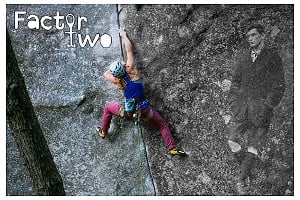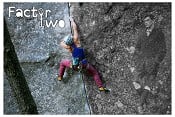In reply to jonnie3430:
> That's the one I was thinking of.
> Do you not think there is some merit in digging a pit? If you choose to come of the Buachaille by the buttress to the West instead of Coire Na Tulaich because you think is safer for the conditions, but you encounter a slope that you are unsure of would there not be some value in a pit? MCoS (
http://www.mcofs.org.uk/avalanche-safety-advice.asp under snowpack,) suggest that more tests means you get an idea of the stability of the slope and I suppose more tests would also mean its more likely to identify the 2/3rds that show stability (if 1/3 don't.)
There is merit in digging pits - as teaching aids. However as a means of assessing whether a slope is safe or not. No.
Why? First off spatial variability has a big influence. In your scenario how many pits would you dig on your suspect slope - one, two, three? Personally I can's see that. To dig a rutschblock takes time, using the method you link also takes time. How long you going to spend?
In all likelihood your technique for measuring stability will give you a middle figure - where does that leave you? Take a chance...How lucky do you feel?
I believe climbers far to often forget the whole planning stage and taking into account the avalanche hazard, weather etc. In your scenario I'd have decided, given the prevailing conditions, whether climbing on the Buchaille gave me enough options with regard to approach/descent free from avalanche hazard or at least on the aspects I was thinking of using. If the hazard was too great or too widespread on where I was going I'd choose a different venue.
Bottom line is using 'tests' such as rutschblock etc don't provide you with reliable bombproof data. Doing lot's of them, and I mean lot's will at best give you a sense of the overall stability of the snowpack, but bottom line, is your day out will pretty much consist of digging holes. Most climbers won't do that but might, at a push, dig one or two. Nowhere near enough to give you reliable data. Hence I'd be trying as far as possible to avoid the avalanche 'minefield' by making good decisions based using the 3x3 process:
snow/weather; terrain; people (human factors)
at the following stages:
Planning; on your approach (journey); at the scene
In saying that the various techniques for measuring slope stability have their uses except although I'd hesitate to call them tests. I think information gathering tools is more apt and less confusing. Tests they are not. Information gained using these techniques should be filtered back into the above matrix.If in any doubt you avoid the slope.
Again in your scenario more often than not there will always be a safer option (avoiding localised or general avalanche hazard)you can use to descend - although it may mean a longer walk.
This link is a bit more up to date:
http://www.sais.gov.uk/avalanche-awareness.aspPost edited at 14:29









